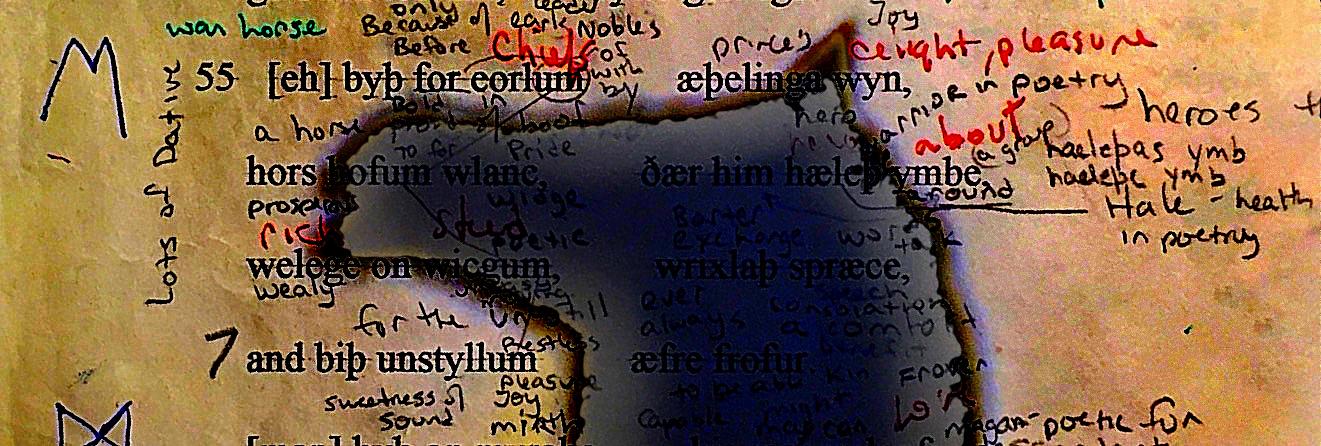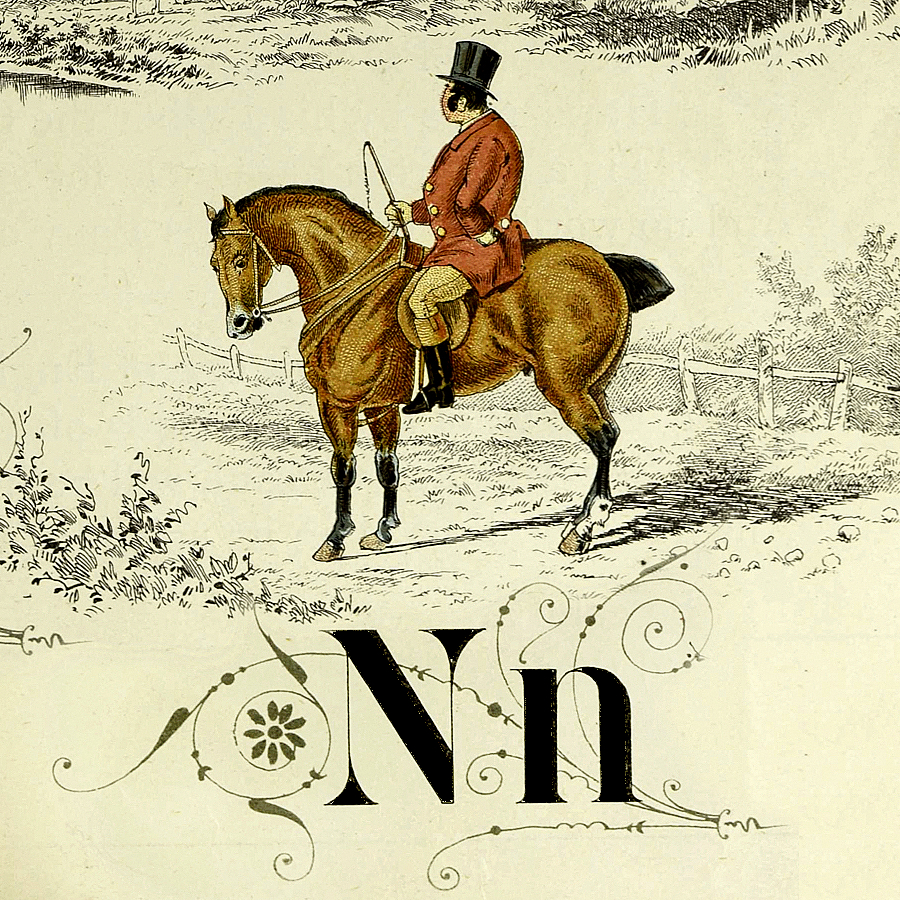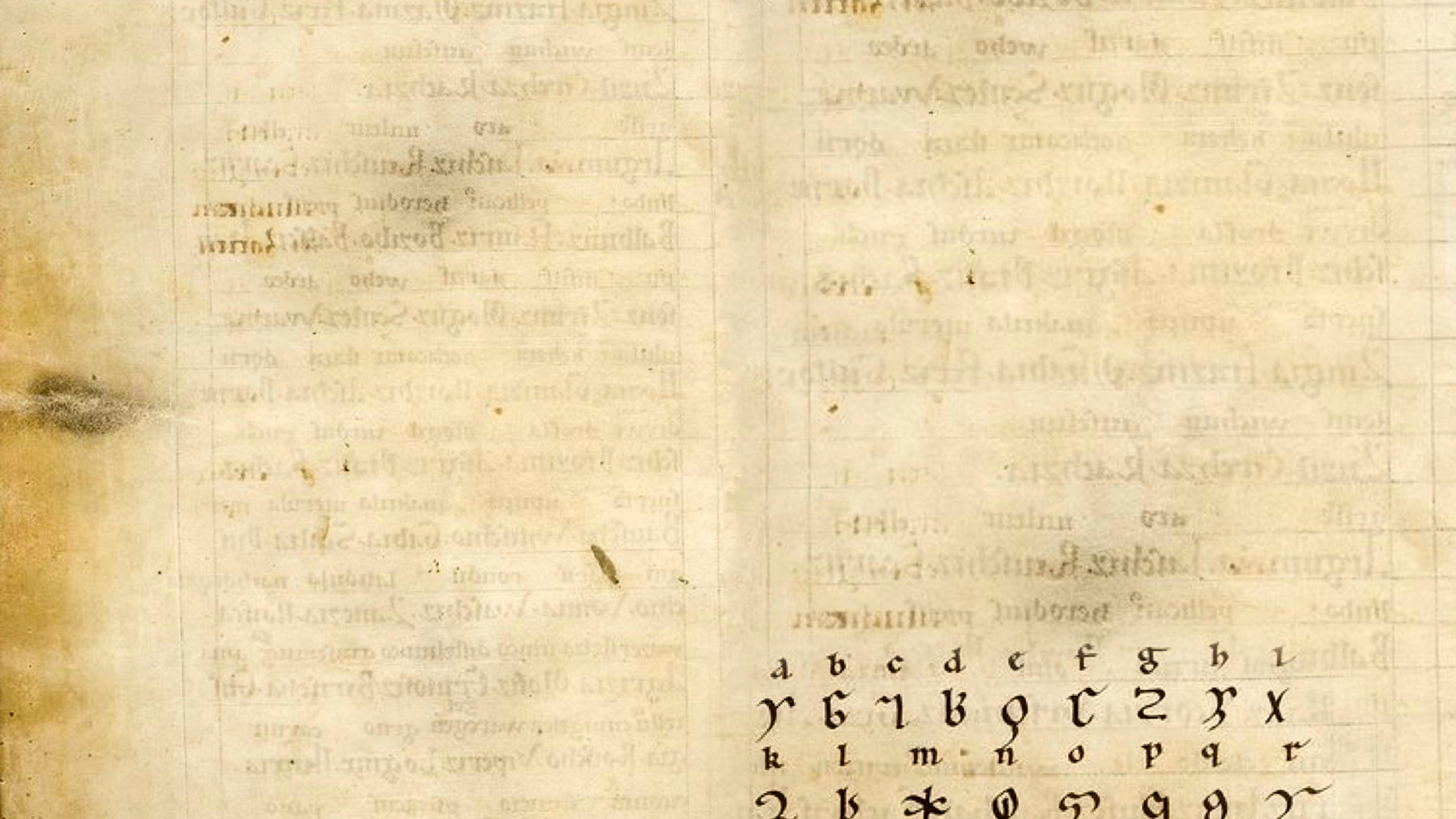 There’s lots of words for horse in Old English, hors, for one. But there’s wicg, hengest, friþhengest, onrid, radhors, mearh, sceam, steda, stott, blanca, gelew, all words that mean specific types of horses by the style, sex, physical appearance, color. This was a horse culture. Horses were a very big deal. Why? They made life easier. Having a horse changes everything. They were useful for pulling stuff, not for ploughing though, they would use oxen for that, but they would use horses to bring goods to market and to haul just about anything anywhere, including themselves: in carts and on horseback. During their prime, horses were particularly indispensable for sending messages long distances. Speedy communication has always been desirable. Finally, literally, chop marks in their bones mean that sometimes horses were eaten, particularly after they’d reach five years of age. Even more finally, horses were sometimes sacrificed in funeral rites. Occasionally a whole horse would be included in a funeral pyre, particularly for women, or they would show up in burials, usually for high status males, but mostly in these cases it was just the horse’s head. Makes perfect sense. Otherwise think of the size of the hole you’d have to dig.
There’s lots of words for horse in Old English, hors, for one. But there’s wicg, hengest, friþhengest, onrid, radhors, mearh, sceam, steda, stott, blanca, gelew, all words that mean specific types of horses by the style, sex, physical appearance, color. This was a horse culture. Horses were a very big deal. Why? They made life easier. Having a horse changes everything. They were useful for pulling stuff, not for ploughing though, they would use oxen for that, but they would use horses to bring goods to market and to haul just about anything anywhere, including themselves: in carts and on horseback. During their prime, horses were particularly indispensable for sending messages long distances. Speedy communication has always been desirable. Finally, literally, chop marks in their bones mean that sometimes horses were eaten, particularly after they’d reach five years of age. Even more finally, horses were sometimes sacrificed in funeral rites. Occasionally a whole horse would be included in a funeral pyre, particularly for women, or they would show up in burials, usually for high status males, but mostly in these cases it was just the horse’s head. Makes perfect sense. Otherwise think of the size of the hole you’d have to dig.
The horse in the Eh stanza does not pull a cart or speed a rider (a lighter weight female rider?) with news from place to place. Look in the Ride stanza for that one. The word for this horse is eh. What type of horse is this stanza talking about? Let’s solve the riddle:
Clue 1: This horse is a prince’s delight for the eorlum. What delights a prince? You know what. It’s always the expensive stuff, the best of the best. The eorlas are not princes, but they can afford stuff that might delight one. These eorlas show up other times in the rune poem too: they are the nobles with sweet looking bows for making them look good on horses, they are waited on by þegns, they are the community leaders who take hope from what Odin is telling them, and they are everybody going to the grave in the end.
Clue 2: Hofum. Dative plural. To or for hooves. Something about the hooves on this hors makes it feel wlanc. Proud. This one is going to rear up a lot and show us its hooves. Be careful, this hors will kick, those hooves are weapons of war. And look at that, iron shoes. Bold. That’ll hurt. That iron on its feet is nice for the horse too, protects its hooves from splitting and such, makes it possible to move faster and carry a heavy weight.
Clue 3: What’s ymbe (around) the horse? The hæleþ. Hæleþ means many things, it means hero when it is used to describe Ing, and it means both health and omens in the Need stanza. This horse is surrounded by heroes, healthy people, strong warriors in heavy armor with big weapons, heading to battle and seeking an omen of their fate beforehand.
Clue 4: The eorlum are welege on wicgum or wealy on widges, obsolete words that lasted in their Old English forms well into the sixteenth century. A widge is a horse, particularly one capable of bearing a heaving burden. People are wealy when they are wealthy, happy, in good health, self indulgent, and enjoy luxuriating in prosperity.
Clue 5: What are these rich heroes doing on their horses? Wrixlaþ means barter, exchange, trade. Spraece is speech. The are talking, exchanging words. They do like to talk a big game. They might be talking over their war plans. Or maybe the horses are the ones doing the talking.
Clue 6: Biþ. The start of most of the stanzas. This biþ appearing at the start of the last line says there’s another part to this riddle, like in the Oak stanza. This horse is one thing to the eorlum, and a whole other thing for the unstyllum. There’s more than one type of person in this stanza. Who are the the unstyllum? What is styll? Still. Styll also means quiet, calm, and secret. Unstyllum sometimes means something in motion, something not at rest, but most often it describes a feeling: disturbed, not at peace, troubled, disquieted. For the unstyllum this horse is always frofur, a consolation and a comfort. This horse is a comfort for troubled people who are not at peace.
Answer: This is a war horse.
Some people are not at peace out of restlessness, they want to go someplace, and yes a horse is a fantastic consolation for the traveler in need of a vehicle. But not this horse. A war horse is not for riding long distances: they are massive and uncomfortable and there are more suitable kinds of horses for a journey. If you are taking a war horse to battle, you ride something else to get there and bring your war horse alongside to keep it fresh for the fight. These unstyllum are troubled for a reason having nothing to do with wanderlust. An enemy is coming to raid them. They feel uneasy about that. But they should look at all the wealthy people with the big horses and be comforted. These heroes know how to go to war. And the war horse is perfectly suited for combat. It is big and strong enough to hold a person wearing a lot of heavy armor, it doesn’t freak out in a battle situation, and it can kick and bite and charge at an enemy. Yes it does eat a ton more than other horses, but these rich guys have the extra fields for that. They can afford to turn over whole acres to feeding these brutes, but don’t think they have to farm for a living. They’ve got the unstyllum for that. So the least they can do is protect them.



